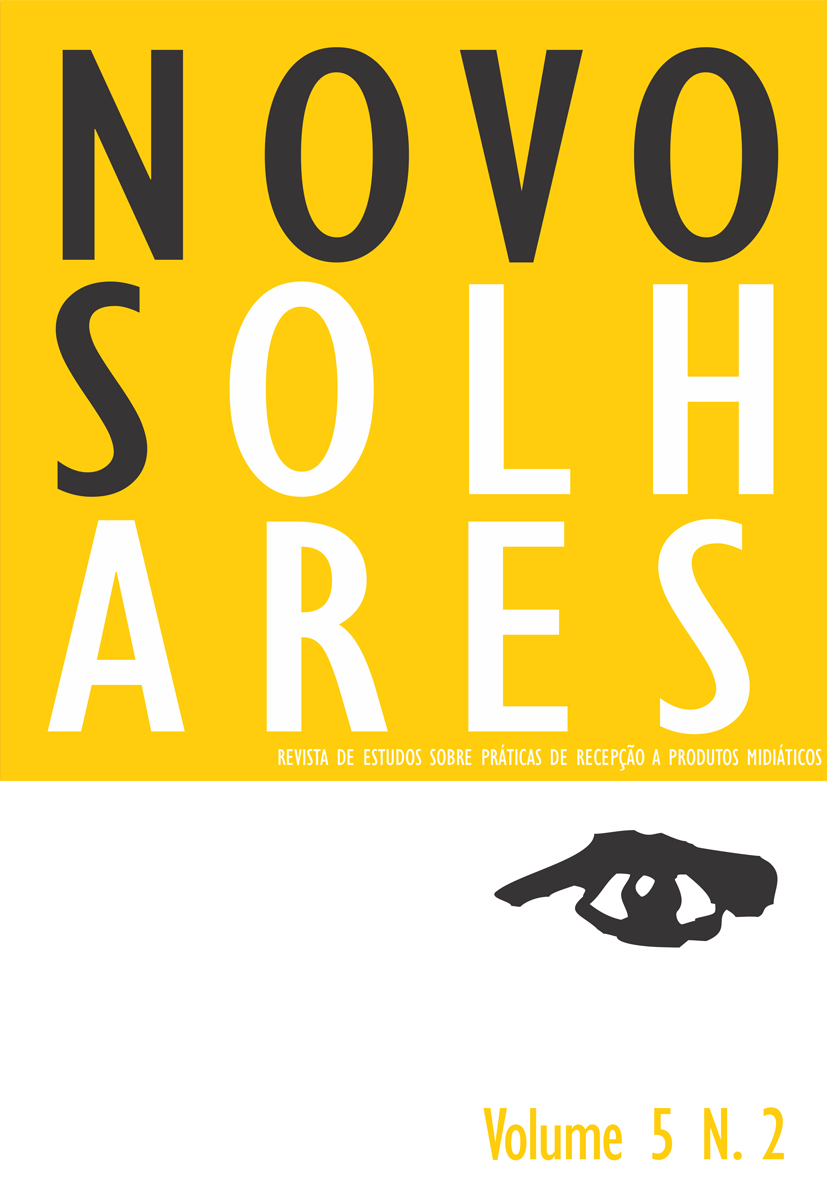Perceptions of Children from Rio de Janeiro about Racial Representation: Notes from the Field
DOI:
https://doi.org/10.11606/issn.2238-7714.no.2016.120320Keywords:
children, school, representation, reception, racism.Abstract
This paper aims to start an analysis of children’s reaction to the dominance of positive White representation in the media. Through the usage of the concept of racial discrimination as a cultural trauma and the work of various authors on colorism in Brazil, there is a contextualization of children’s symbolically violent discourses in the schools. The article also points out some strategies of discourse building and policies that are beginning to be made in an attempt to address this matter. The work is part of my Master’s research about the violence in children’s daily interactions, for which I have done fieldwork in two school of different social and economical profiles in the city of Rio de Janeiro.
Downloads
References
Referências
APPIAH, K. A. The ethics of identity. New Jersey: Princeton University Press, 2005.
ARAÚJO, J. Z. A negação do Brasil: o negro na telenovela brasileira. São Paulo: Senac, 2004.
BOURDIEU, P.; PASSERON, J. C. Reproduction in education, society and culture. London: Sage, 1990.
BUCKINGHAM, D. Children’s media rights. In: ______. After the death of childhood: growing up in the age of electronic media. Cambridge: Polity, 2010.
CARTER, R. T. Racism and psychological and emotional injury: recognizing and assessing race-based traumatic stress. The Counseling Psychologist, London, v. 35, n. 1, p. 13-105, jan. 2007.
DENNISON, S. Blonde Bombshell: Xuxa and notions of whiteness in Brazil. Journal of Latin American Cultural Studies, [s.l.], v. 22, n. 3, p. 287-304, 2013.
ERNY, P. L’ethnologie de l’éducation. Paris: PUF, 1981.
EYERMAN, R. Cultural Trauma: slavery and the formation of African American identity. Cambridge: Cambridge University Press, 2003.
GOMES, I. B. A. A ameaça simbólica das cotas raciais na mídia brasileira: o negro nas telenovelas. São Luís: UFMA, 2008.
HURLEY, D. Seeing white: children of color and the Disney Fairy Tale princess. The Journal of Negro Education, New York, v. 74, n. 3, p. 221-232, 2005.
MILNER, D. Children and race. London: Penguin Books, 1975.
NASCIMENTO, E. L. The sorcery of color: identity, race and gender in Brazil. Philadelphia: Temple University Press, 2009.
SCHWARCZ, L. M. Nem preto nem branco, muito pelo contrário: cor e raça na sociabilidade brasileira. São Paulo: Companhia das Letras, 2012.
SCHUCMAN, L. V. Entre o “encardido”, o “branco” e o “branquíssimo”: raça, hierarquia e poder na construção da branquitude paulistana. 2012. 122 f. Tese (Doutorado em Psicologia) – Instituto de Psicologia, Universidade de São Paulo, São Paulo, 2012.
SOARES, M. A. S. Look, blackness in Brazil!: disrupting the grotesquerie of racial representation in Brazilian visual culture. Cultural Dynamics, London, v. 24, n. 1, p. 75-101, 2012.
SODRÉ, M. Claros e escuros: identidade, povo e mídia no Brasil. Petrópolis: Vozes, 2000.
SOVIK, L. Aqui ninguém é branco: hegemonia branca e média no Brasil. In: WARE, V. (Org.). Branquidade: identidade branca e multiculturalismo. Rio de Janeiro: Garamond, 2004. p. 363-386.
VIOLA DAVIS gives powerful speech about diversity and opportunity: Emmys 2015. Reprodução: YouTube − Television Academy. 20 set. 2015. (3 min), son., color. Disponível em: <http://bit.ly/1KFr67O>. Acesso em: 18 jan. 2016.
Downloads
Published
Issue
Section
License
Proposta de Aviso de Direito Autoral Creative Commons
1. Proposta de Política para Periódicos de Acesso Livre
Autores que publicam nesta revista concordam com os seguintes termos:
- Autores mantém os direitos autorais e concedem à revista o direito de primeira publicação, com o trabalho simultaneamente licenciado sob a Licença Creative Commons Attribution CC Attribution-NonCommercial-NoDerivatives 4.0, que permite o compartilhamento do trabalho com reconhecimento da autoria e publicação inicial nesta revista.
- Autores têm autorização para assumir contratos adicionais separadamente, para distribuição não-exclusiva da versão do trabalho publicada nesta revista (ex.: publicar em repositório institucional ou como capítulo de livro), com reconhecimento de autoria e publicação inicial nesta revista.
- Autores têm permissão e são estimulados a publicar e distribuir seu trabalho online (ex.: em repositórios institucionais ou na sua página pessoal) a qualquer ponto antes ou durante o processo editorial, já que isso pode gerar alterações produtivas, bem como aumentar o impacto e a citação do trabalho publicado.



